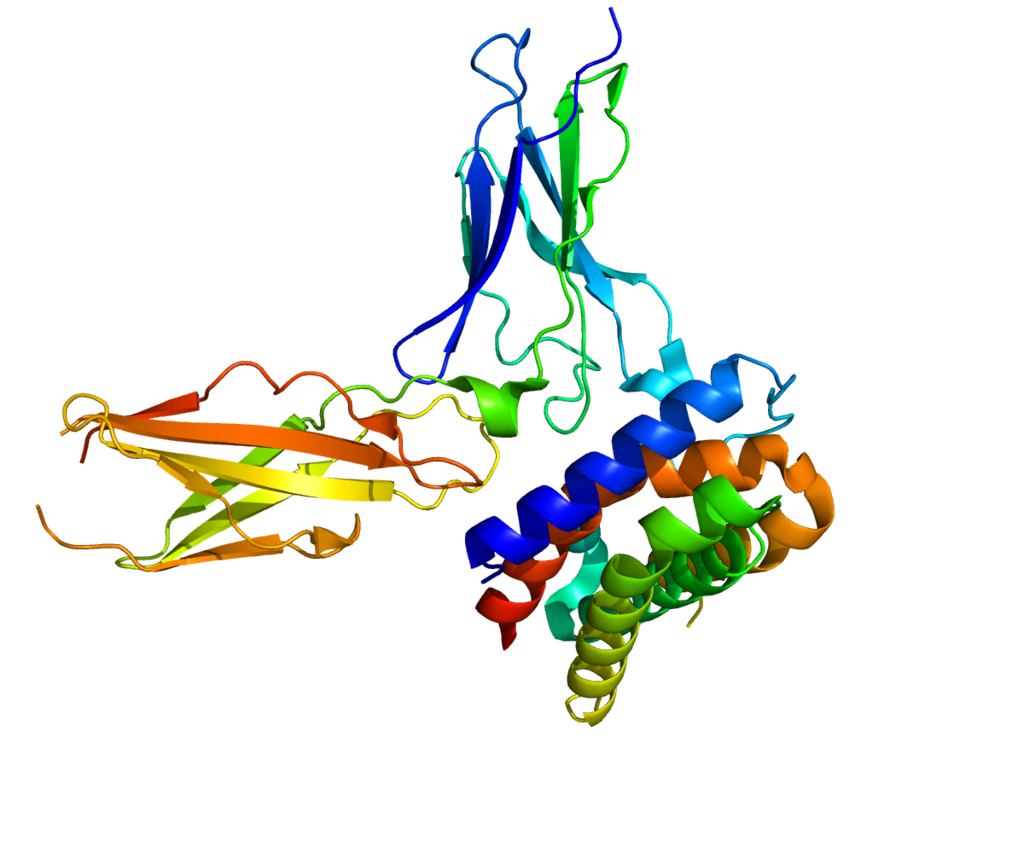 Interleukin 29
Interleukin 29
Figure This is a structure of IL-29 created using the data from Protein Data Bank (PDB: 3OG4) and rendered using PyMOL.
The mature polypeptides of IL-28A/IL-28B and IL-29 contain 175 and 181 amino acids, respectively. The amino acid sequences between human IL-29 and IL-28 is similar for approximately 81%, whereas IL-28A and IL-28B are almost identical (96%). Regarding the other IL-10-IFN family members, IL-28A/B shows the highest amino acid homology with IFN-α (22%), IFN-ω (21%), and IL-24 (19%). IL-29, however, shows the highest sequence similarity toward IL-20 (19%) and IL-26 (16%).
After viral infection the production of not only type 1 IFNs is stimulated but also that of IL-28 and IL-29. Both cytokines were shown to reduce viral replication of a range of viruses, including DNA viruses and single-stranded RNA viruses. In spite of functional similarities between IFN-α/β and IL-29, the latter does not bind to the IFN-α/β receptor, but instead signals through a receptor composed of the IL-28R1 and IL-10R2 subunits. In addition, the receptor for IFN-α/β is expressed on nearly all somatic cells, whereas the receptor for IL-29 is primarily expressed on nonhematopoietic cells and less on leukocytes. IL-28 and IL-29 also possess antigrowth activity, which, however, seems to be more limited than that of type I IFNs.